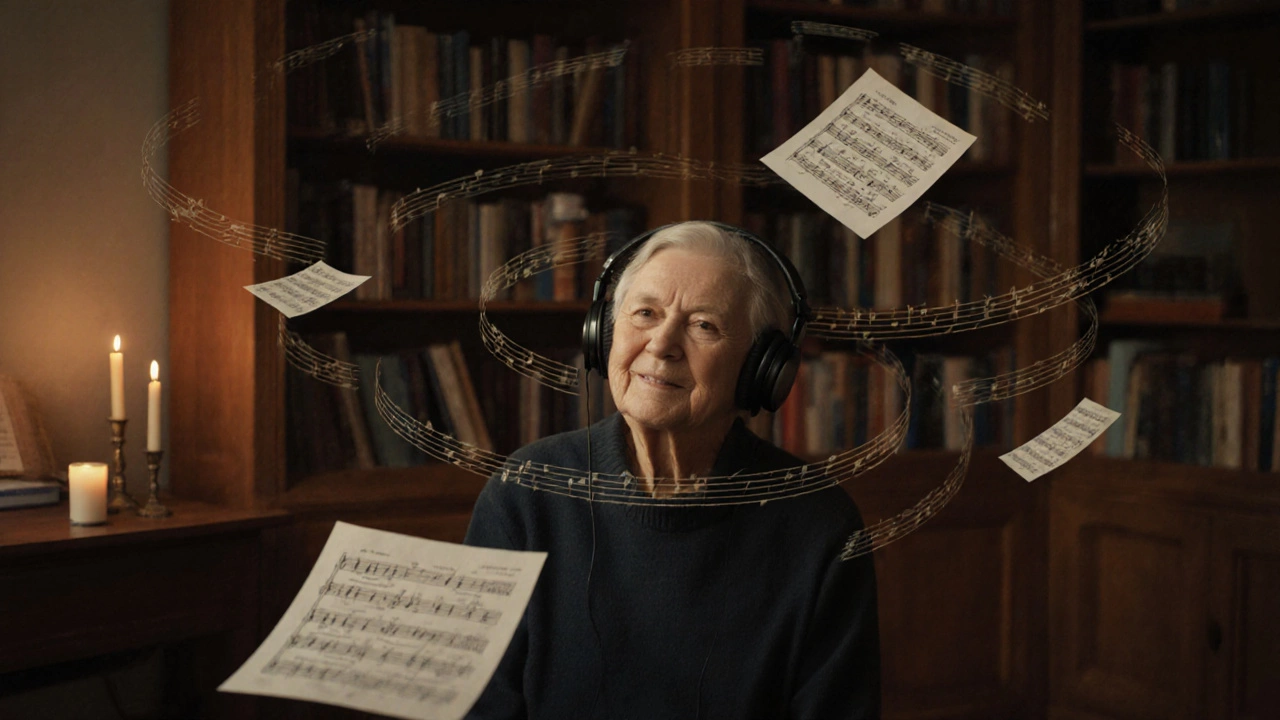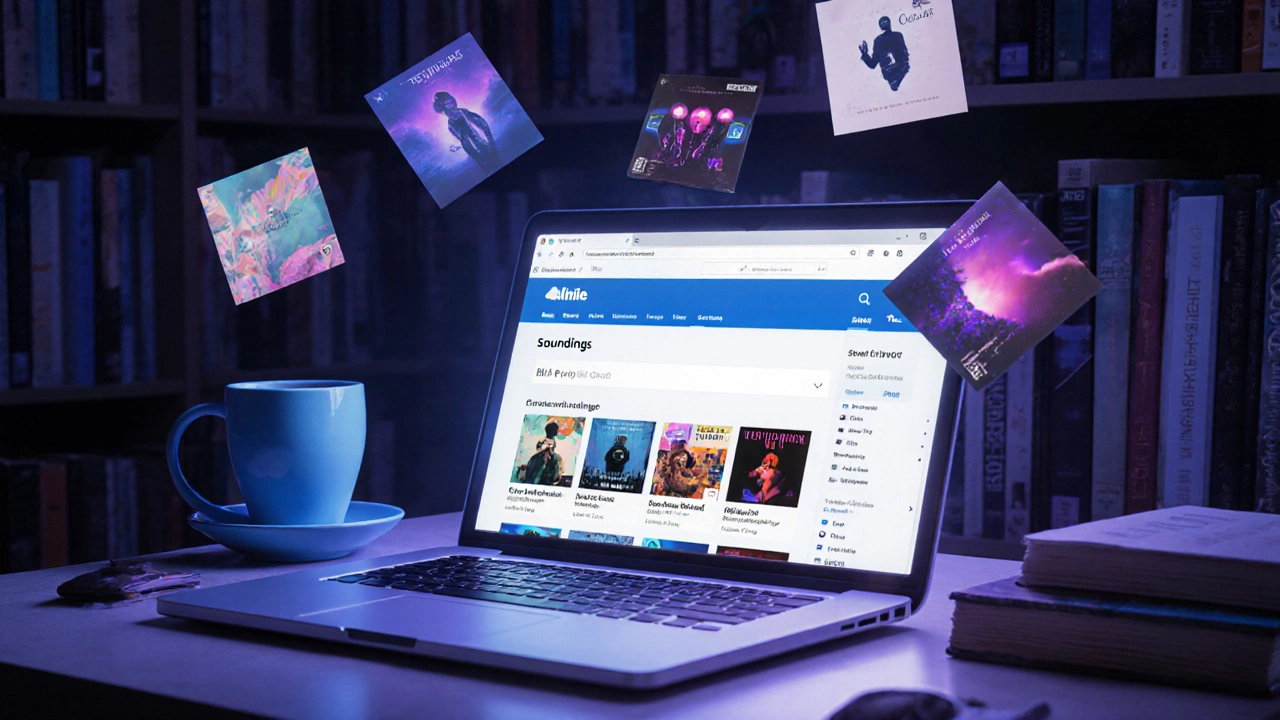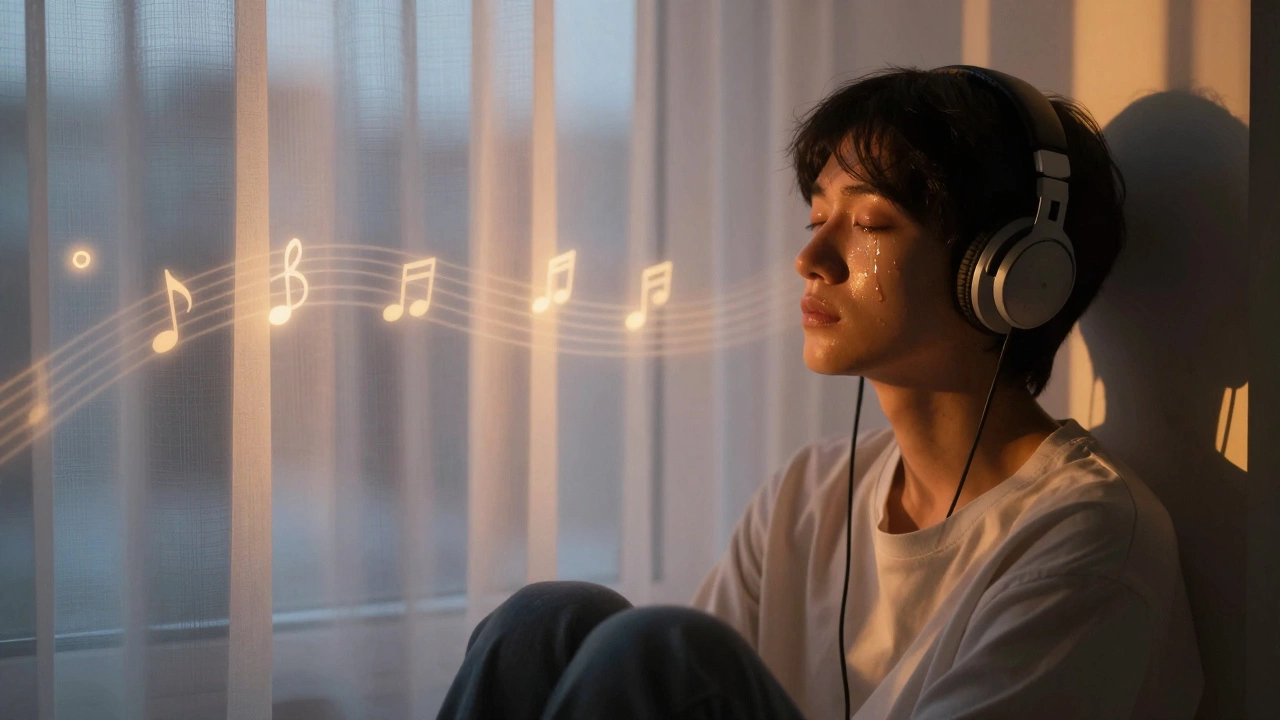Free Music Site Compatibility Checker
Find the best free music site for your needs. Select your priorities and we'll recommend the most compatible sites from the article.
Recommended Sites
Based on your selections, these sites are most compatible with your needs:
Note: Always check the specific license terms for each track before using. Some sites require attribution or have restrictions on commercial use.
For commercial projects, focus on sites with Creative Commons licenses like Free Music Archive, Jamendo, and Musopen.
You don’t need to pay for Spotify Premium or Apple Music to listen to music. There are real, legal, free music websites out there - not just sketchy YouTube rips or ad-filled junk sites. Some of them even let you download tracks, create playlists, and discover new artists without a credit card. If you’ve ever wondered, is there a free music website? The answer is yes - and here are seven that actually work in 2025.
1. SoundCloud (Free Tier)
SoundCloud isn’t just for uploaders and bedroom producers anymore. It’s one of the biggest libraries of free, legal music online. Millions of tracks are available to stream for free, from indie bands to major label drops. You can’t skip more than a few songs per hour on the free plan, but that’s fine if you’re exploring. The real value? You’ll find tracks you can’t get anywhere else - live recordings, remixes, unreleased demos. It’s like digging through a record store basement, but digital.
Artists upload directly, so you’re supporting them even when you’re not paying. SoundCloud’s free tier works on mobile and desktop. No sign-up needed to listen, but creating an account unlocks saves, playlists, and offline listening on Android.
2. YouTube Music (Free with Ads)
Yes, YouTube Music has a free version - and it’s not just a bunch of low-quality uploads. Major labels license their catalogs here, so you’ll find official albums, singles, and music videos. Search for any song, and you’ll usually get the official version with the original artwork and metadata. The catch? You get ads every few minutes, and you can’t play music in the background on mobile unless you’re on Wi-Fi.
Still, if you want to hear a new Taylor Swift track or an old Nirvana live session, YouTube Music delivers. It’s one of the few places where you can find rare bootlegs and fan-made edits that aren’t on Spotify. The app also recommends tracks based on what you watch on YouTube, so your library grows naturally.
3. Free Music Archive (FMA)
If you want music you can legally download and use - for videos, podcasts, or just personal listening - the Free Music Archive is the gold standard. Run by WFMU, a legendary independent radio station, FMA hosts over 150,000 tracks licensed under Creative Commons. That means no copyright strikes, no royalties to pay.
Genres? Everything. Ambient, folk, jazz, electronic, experimental. You can filter by license type, mood, duration, and even whether you can use the music commercially. Many tracks come with artist bios and links to their Bandcamp pages. It’s perfect for creators, students, or anyone who wants to avoid the corporate playlist grind.
4. Jamendo
Jamendo is like SoundCloud’s quieter, more organized cousin. It focuses on independent artists who release music under free licenses. You can stream thousands of tracks without signing up. Want to download? Create a free account and grab MP3s at 320 kbps - no watermarks, no limits. Some tracks even come with stems (individual instrument tracks) for remixing.
Jamendo’s curated playlists are surprisingly good. There’s a “Chill Vibes for Study” collection that’s become a go-to for students in Sydney and beyond. The site also has a “Top 100” chart updated daily, so you’re not stuck with the same 10 songs over and over.

5. Internet Archive’s Audio Archive
This one’s for the history buffs and crate-diggers. The Internet Archive isn’t a streaming service - it’s a digital library. And its Audio Archive holds over 7 million recordings: live concerts from the 1970s, old radio shows, field recordings, folk music from rural Appalachia, even Soviet-era pop. Some are rare, some are forgotten, and some are just weird - like a 1982 synth cover of “My Heart Will Go On” by a band in Belarus.
You can’t skip tracks or make playlists here. But if you want to hear what music sounded like before streaming, or find a live Grateful Dead show from 1987, this is the place. Everything is free, no ads, no login. Just search, click, and listen.
6. Bandcamp (Free Tracks Section)
Bandcamp is known for paying artists fairly - but not everything costs money. Every day, hundreds of artists offer one or more free downloads. Just click the “Free” filter under “Music” on the homepage. You’ll find full albums, EPs, and singles you can download in FLAC, MP3, or WAV. No email signup required for most free downloads.
It’s a great way to discover new artists before you commit to buying. I found a lo-fi hip-hop producer from Melbourne last year who now has a cult following - all because I downloaded their free EP. Bandcamp’s free section is updated hourly. Check back often.
7. Musopen
For classical music lovers, Musopen is the only free option that matters. It offers over 50,000 public domain recordings - Beethoven symphonies, Chopin nocturnes, Bach cantatas - all recorded by real orchestras and soloists. These aren’t MIDI files or cheap synth versions. These are high-quality, studio-recorded performances.
You can stream them, download them as MP3s, or even get sheet music for free. Musopen is nonprofit, funded by donations, and has no ads. It’s the closest thing to a free classical music subscription service. If you’ve ever wanted to learn piano and needed backing tracks, this is where you start.
What about YouTube? Isn’t that free too?
YouTube is free, yes - but it’s not designed for music listening. You get ads, buffering, random videos between songs, and no way to queue up an album without clicking 20 times. Plus, a lot of uploads are taken down within hours. If you want a clean, reliable music experience, stick to the sites above.

Are these sites really legal?
Yes. All seven sites either have licenses from rights holders (like SoundCloud and YouTube Music) or host only music that’s in the public domain or released under Creative Commons (like FMA, Jamendo, Musopen). You won’t get a copyright strike for listening. Downloading is legal too - as long as the site says you can.
Stay away from sites that say “Free MP3 Downloads” without naming the artist or label. Those are piracy hubs. The sites listed here are transparent, reputable, and built to support artists - not exploit them.
Can you use these for background music in videos or podcasts?
Some can, some can’t. Always check the license. SoundCloud and YouTube Music tracks are for personal use only. If you’re making a YouTube video or podcast, use only FMA, Jamendo, or Musopen - they clearly state which licenses allow commercial use. Look for “CC0” or “Attribution” licenses. Avoid anything labeled “All Rights Reserved.”
What’s the catch?
No ads? No skips? No offline mode? That’s the trade-off. Free music sites give you access, not convenience. You’ll deal with ads, limited skips, or slower streaming. But you’re getting something better than just music - you’re getting discovery, authenticity, and support for independent creators. You’re not just listening. You’re exploring.
Can I download music from free music websites for offline listening?
Yes, but only on certain sites. Free Music Archive, Jamendo, Bandcamp (free tracks), and Musopen let you download tracks as MP3s or other formats. SoundCloud and YouTube Music don’t allow downloads on their free tiers. Always check the site’s terms - downloading copyrighted music without permission is illegal.
Are free music websites safe to use?
The sites listed here are safe - they’re well-known, nonprofit, or run by reputable organizations. Avoid random sites that pop up in Google searches promising “free music downloads.” Those often contain malware or phishing links. Stick to the ones with clear licensing info, artist credits, and professional design.
Do free music websites have good sound quality?
It varies. YouTube Music and SoundCloud stream at 128-160 kbps on free plans - fine for casual listening. Jamendo and Bandcamp offer 320 kbps MP3 downloads. Musopen and FMA often provide 256-320 kbps files. For audiophiles, FLAC files are available on some Bandcamp and FMA tracks. You won’t get lossless quality like Apple Music or Tidal, but it’s more than enough for most people.
Can I use music from these sites in my YouTube videos?
Only if the license allows it. SoundCloud and YouTube Music tracks are for personal use only. For YouTube videos, use music from Free Music Archive, Jamendo, or Musopen - and only if the license says “Attribution” or “CC0.” Always credit the artist in your video description. Never assume a song is free to use just because it’s on a free site.
Why don’t more people use free music websites?
Because streaming services make it easy. Spotify and Apple Music have algorithms that guess what you like, seamless playlists, and no ads. Free sites require more effort - you have to search, filter, and sometimes wait for ads. But if you care about supporting independent artists, discovering hidden gems, or avoiding subscription fees, they’re worth the extra step.
Where to go next
If you liked these free options, try exploring artist pages on Bandcamp or checking out local radio stations like WFMU or Triple J. Many artists link to their own free releases or upcoming gigs. You might even find a local band from Sydney you’ve never heard of - and become their first fan.





